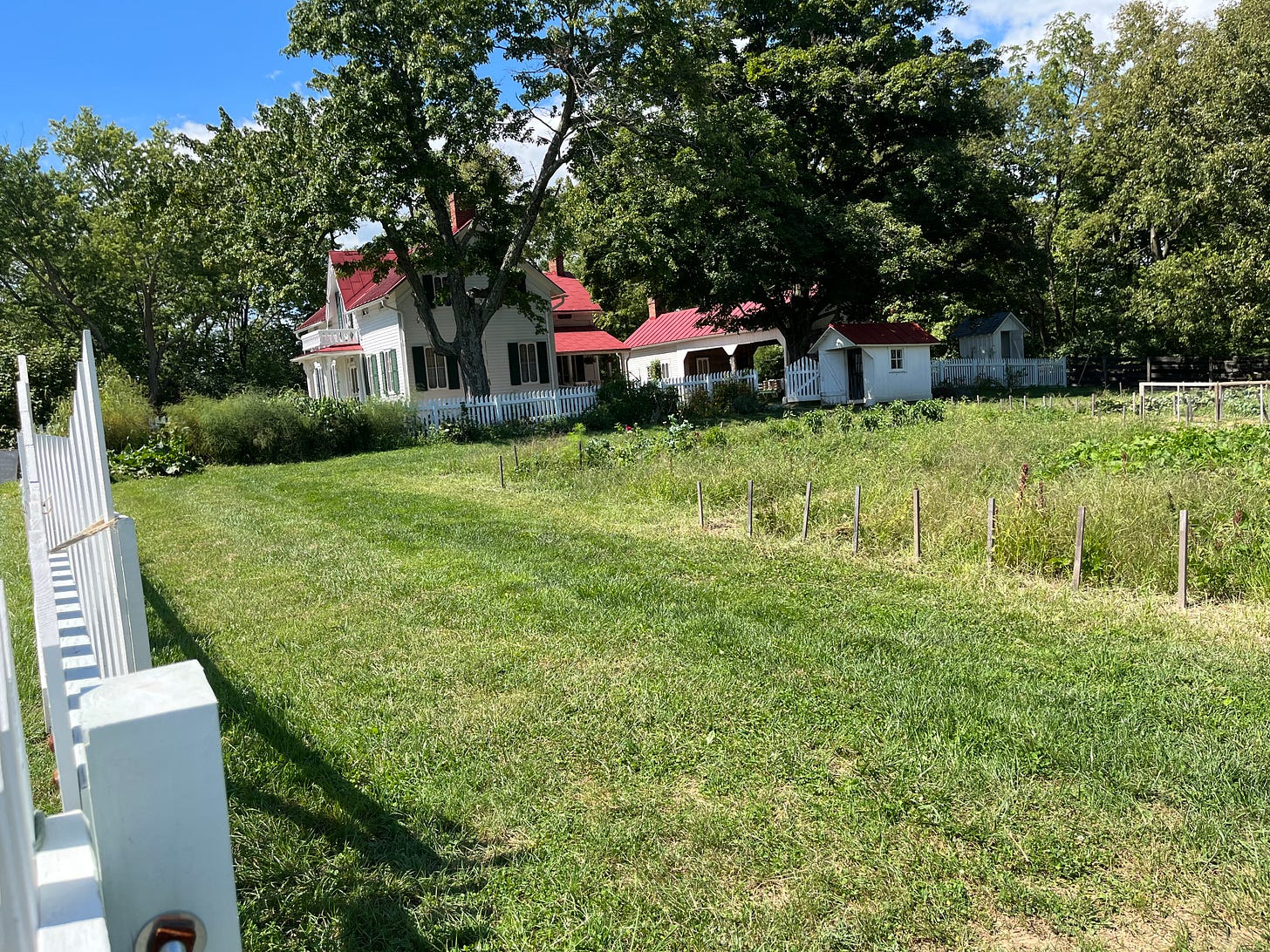A Tribute...
And Musings On the State of Our Sanity
This week, I lost my beautiful, faithful friend (and crack research assistant for this newsletter), Bocci, and it has been more difficult to deal with than I could have imagined. The only way I can describe this loss is “brutal”.
I found him at the dog shelter in early June, 2008. He was 8-10 months old and according to shelter records, was found on the road where the shelter is located, likely dropped off at the end of the college semester by students who tired of him.
It was just before my 50th birthday, and for the next fourteen years and three months, he inspired me to do better, be nicer, with his exuberance for everyone and everything (typically squirrels and all humans) and eagerness to engage with his part of the world. Thousands of walks and hikes, every day and in any weather, kept us both going, mentally and physically, and allowed us to create and nurture a beautiful bond. As one of my neighbors said when I told him the news: “They mark entire eras for us.”
I’ve noticed that loss is harder to take, both physically and emotionally, as we grow older. “Springing back” takes a lot more time, if it ever happens.
As a way to ease our grief, and perhaps to salute Bocci, my good friend (who always took care of him in my absence), and I headed to a local metro park to soak in the life-affirming sunshine and wander through a “Living Historical Farm” .
City, state and county funds, grants and donations maintain the 19 metro parks in the Columbus, Ohio area, including this 1880’s working farm at Slate Run Metro Park.
By developing a living historical farm…Metro parks is preserving and interpreting the agricultural history of the area…Visitors see the routines of daily life carried out with the tools, equipment and methods used before the introduction of electricity or gasoline engines. The activities change with the day and the season because this is a working farm.
It can be a fun learning experience for kids, unless they are traumatized by the fact that most of the animals (except the horses, I pray), are slaughtered for food. When we arrived, the workers were eating a lunch of pork meatloaf, tomatoes and cornbread which they make only from ingredients grown or raised on the farm. I’m pretty sure visitor activities do not include witnessing the slaughtering of farm animals, but I didn’t ask.
There are vegetable gardens, orchards, fields of crops, a small grape arbor, pastures, a root cellar and smokehouse. The workers — county employees I believe — do all of the farm work including planting and harvesting crops with draft horses, and preserving and canning for the winter months.
I love watching the pasture-raised chickens and turkeys do their thing: running, clucking and pecking the ground for bugs, with all of their instinctive behaviors on display.
This is exactly the opposite of the zero instinctual behaviors afforded egg-laying hens in a factory farm, where most of our supermarket eggs come from. They are crammed into tiny cages, their beaks are trimmed to nubs so they don’t shred themselves or kill their cage mates. Lights are turned on and off during a 24 hour cycle, simulating natural light to induce egg laying. And what is called the “attrition rate” — how many birds just keel over dead in a 24 hour period— was 600 per day, per “barn” (or massive steel building housing hundreds of thousands of chickens), when I was helping to regulate these factories as part of my work for the Ohio EPA.
But wait, there’s more. In a vain attempt to prevent disease, the hens’ feed includes antibiotics and other drugs. And to stem the bug population caused by the hideous overcrowding of live creatures, insecticides are pumped into each building in massive amounts. This is what factory farmed poultry eat and inhale, and then what you ingest when you eat factory farmed eggs or the flesh of any factory farmed animal. Even if you disregard the Twilight Zone existence of these birds, their egg shells are thin, yolks pale and tasteless. These are not eggs, and the cruelty the hens endure to produce them cheaply is a perfect example of what has gone wrong with our world. At the very least, spring for the few extra dollars per dozen eggs to help end this nightmare.
Don’t believe it when people argue that this type of cruelty and mass production of eggs or other products derived from animals is necessary to “efficiently” feed our planet’s growing population. It is only about making as much short term money as possible for the owners of the factory farms. Take a look at this information about factory farms from the Humane League. Our grandparents and parents did not eat this way or live among this much pollution and cruelty. Our sanity as a species and as a country is at a tipping point.
That is why I am writing this newsletter — the massive disparity in wealth and sheer greed of the few must be turned around, mitigated to ease its pain on others, so more of us can thrive in a more peaceful world. That’s what I was thinking as I was watching the hens (and two roosters we were told) enjoying themselves on a warm, August day.
Bocci in his younger years, leading the way on one of our metro park walks.








So sorry to hear about your loss
Oh Joan, I am SO SORRY!!! There is nothing else like losing our furbaby, our best friend. My heart absolutely breaks for you. Thirteen years is a good run but never long enough.
Sending you love 💕